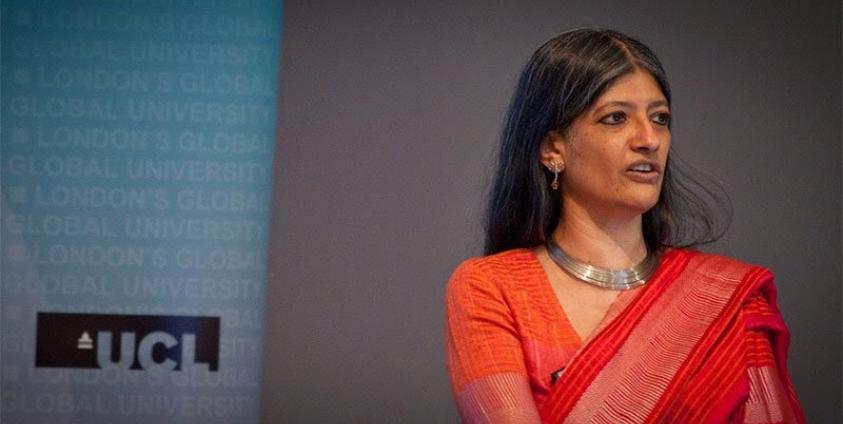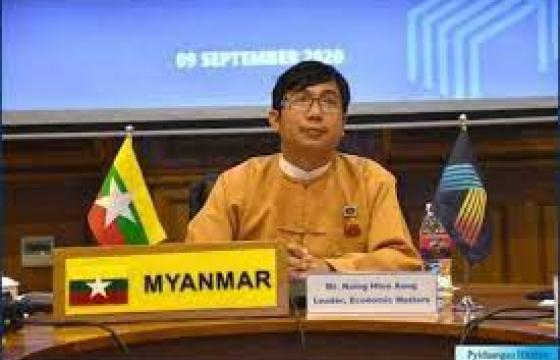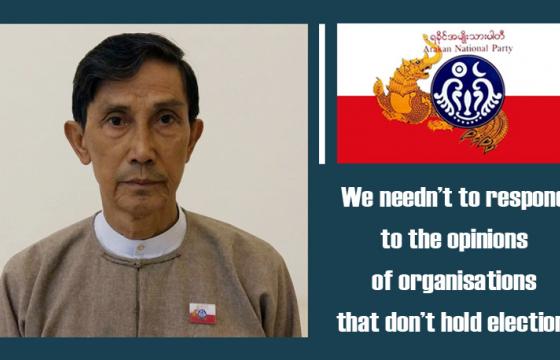Leading Indian economists Prof. Jayati Ghosh and Prof. C P Chandrasekhar of Jawaharlal Nehru University are visiting Myanmar to interact with Myanmar policy makers, academic scholars, civil society, government officials and NGOs in order to share perspectives on economic development strategies.
They have been invited by Action Aid Myanmar and the Mizzima Media Group for discussions in Nay Pyi Taw and Yangon from August 25-27.
In the following interview, carried out by e-mail just ahead of the visit, Prof. Jayati Ghosh discusses Myanmar’s opportunities for development and the lessons from India’s experience.
What could Myanmar learn from India’s development experience?
India’s development experience offers both positive and negative lessons for Myanmar. It has grown rapidly over nearly three decades, with rising investment rates (until recently) and on the basis of some diversification of production. This in turn has spurred the growth of a “middle class” that amounts to around 150 million people even though that is still a minority of the Indian population. However, this growth has not been marked by adequate structural change, particularly in terms of moving the work force out of low productivity activities in agriculture and low grade services into higher value added activities. This central contradiction points to one important lesson: GDP growth alone is not enough to ensure structural transformation and improvement in the material conditions of the bottom half of the population. In order to affect those, the pattern of the growth is important, along with proactive government policies designed to ensure more inclusion and greater spread of the benefits of growth.
As India has seen, there can be challenges with the devolution of financial powers between the Centre and the states. Are there any lessons from India’s experience that could apply to Myanmar, particularly as it is going through a sensitive peace process with ethnic armed groups in the ethnic states?
Devolution of some financial powers and decentralisation of economic policy making can be central not only to ensure peace and stability in the country, but also greater economic justice and greater people’s participation in economic decision making. At the same time, it is important to avoid growing regional imbalances, so the role of the Centre should also be to encourage the spread of resources and public investment to allow backward regions to catch up.
How do you view the challenge of balancing allocation between different sectors of the economy and prioritizing infrastructure development at the grassroots?
Infrastructure development is absolutely critical for development, but even within that there is need to prioritise different kinds of infrastructural spending. Social infrastructure (health, sanitation, education and so on) may be just as important as physical infrastructure. Within the latter, ensuring all-weather roads to every village may have greater direct and indirect benefits to the people and to the economy than spending huge amounts on “trophy projects” like state-of-the-art airports.
Over 60 percent of Myanmar’s population is involved in the agricultural sector which is in need of development. What might Myanmar learn – both positive and negative – from India’s development of the agricultural sector?
The advances and the problems, as well as the regional variations, in India’s agricultural sector highlight some important issues, most of all the critical role played by public intervention and support. To ensure viable agriculturethat shows increasing productivity and contributes to rural economic growth, it is necessary to encourage crop diversification and improved agricultural practices that are sustainable and able to adapt to changing weather conditions because of climate changes. Government policies have to take a holistic approach covering some major areas: irrigation and water management; access to affordable institutional credit on terms designed specifically for agriculturalists; public research and extension systems that take up the concerns and problems of farmers and provide relevant knowledge that they can use; access to affordable inputs (seeds, fertiliser, pesticides, etc.) and proper knowledge about their correct use; post-harvest technologies like storage and basic processing; assistance in marketing and linking up with wider markets; non-crop activities like livestock rearing. If these are all given impetus, the rise in rural incomes will give rise to more non-agricultural activities as well, leading to a more buoyant rural economy and less distress migration.
Prime Minister Narendra Modi is viewed as progressive with his economic development plans, partly inspired, it would seem, from the great strides being made in China. Is there an economic “blueprint” that countries like India and Myanmar should follow that combines development and profit with equitable and inclusive outreach?
The great positive example provided by the Chinese experience is that of rapid employment generation outside of agriculture. However, the Chinese experience is hard to reproduce simplistically, especially because of its unique politico-economic system and therefore other countries even in Asia need to develop their own strategies specifically tailored to their own circumstances. For example, the Chinese “reform” process occurred in a context of relatively egalitarian land distribution and labour markets that were not segmented by social categories – completely unlike the Indian context. The Chinese could allow rapid growth to proceed with less concern for equitable distribution up to a point, because of that context. In India, inequalities are already so marked and significant that a growth process that makes inequality worse will generate far too many social tensions and may become counterproductive. Similarly, Myanmar also needs to take into account its own specific context in which there are already significant inequalities, which means that its development should strive to be as inclusive as possible.
You have worked a great deal with social movements in India and abroad. From your knowledge, what strikes you as the challenges for the new Myanmar government in terms of people-centred policies?
Myanmar is a country with enormous potential for rapid economic growth – but such growth also brings with it various kinds of tensions, especially as people are displaced from land and livelihood and if other productive employment opportunities do not grow rapidly enough. These tensions can often combine with existing social problems and divisions based on ethnic or other grounds to create explosive situations. This is one major challenge. Another is that of ensuring that growth leads to employment creation, in a world economy in which secure and remunerative jobs are not really getting created in most economies. A third problem that is particularly the case for Myanmar is that of managing what could be called a new “gold rush” as global investors flock to the country particularly to benefit from the extractive industries. Both state and civil society in Myanmar need to be aware of potential dangers of signing on to agreements and legal arrangements that may appear attractive at first sight but could have long term negative implications.
One issue that has come to the fore in discussions about developing Myanmar over the last five years since the country has been opening up is the empowerment of women in the workplace. How important might this be for Myanmar and are there any lessons – positive or negative – from India’s experience?
Much of the success of export-oriented industrialising countries in East and Southeast Asia was related to their ability to draw women into paid work in large numbers. At first this was associated with large gender wage gaps and insecure conditions of work, but as more women entered into such work, these conditions also improved. Women’s labour – both paid and unpaid – has been integral to the economic achievements across the Asian regions. The difference is that in India this has been largely unpaid (and often unrecognised) work of women, which is an unfortunately indicator of their relatively low status in society as well. It is to be hoped that Myanmar avoids such a pitfall, because the economic empowerment of women is not only about better conditions for them – it is also a major element in wider economic progress.
On a global level, the economies of India and China are growing and in the coming decades we are likely to see – in simple terms – a shift towards Eurasia. How do you view the big picture in the coming decades?
The global “shift to Asia” is likely to be felt more within the Asian region than elsewhere, as countries in the region are likely to get more and more drawn into economic relations of various kinds with one another. Of course the advanced economies will still remain significant, and also more powerful, for a long period to come, and new forms of economic control (such as intellectual property rights) are being developed to keep Asian developing countries in a relatively subordinate position. But it is likely that there will be more stimuli for growth emanating from within the region. At the same time, there are also rivalries and tensions between countries, and these may get accentuated as economic growth decelerates.
Where might Myanmar fit in this big picture as borders and communications open up?
Myanmar’s geographical position makes it ideally placed as a bridge between Southeast and South Asia, and improved transport and communication networks, as well as enhanced trade and investment links, would contribute dramatically to this.
Is there anything else you would like to add?
This is a very exciting time for Myanmar, but also a time when it is important to think carefully about choices with regard to economic strategy, because some choices may be hard to undo later and will fix the country onto a particular trajectory. If an equitable, sustainable and just economic path is sought, hasty decisions taken on the basis of immediate gains are not ideal. In particular, Myanmar has the advantage of being able to avoid the mistakes that other countries have made in terms of premature liberalisation of some markets and financial deregulation that creates volatility and fragility. Rather, the country can seek to forge its own path – if necessary with a slower but more equitable and sustainable pattern of growth – that provides more employment and basic needs to all citizens.







